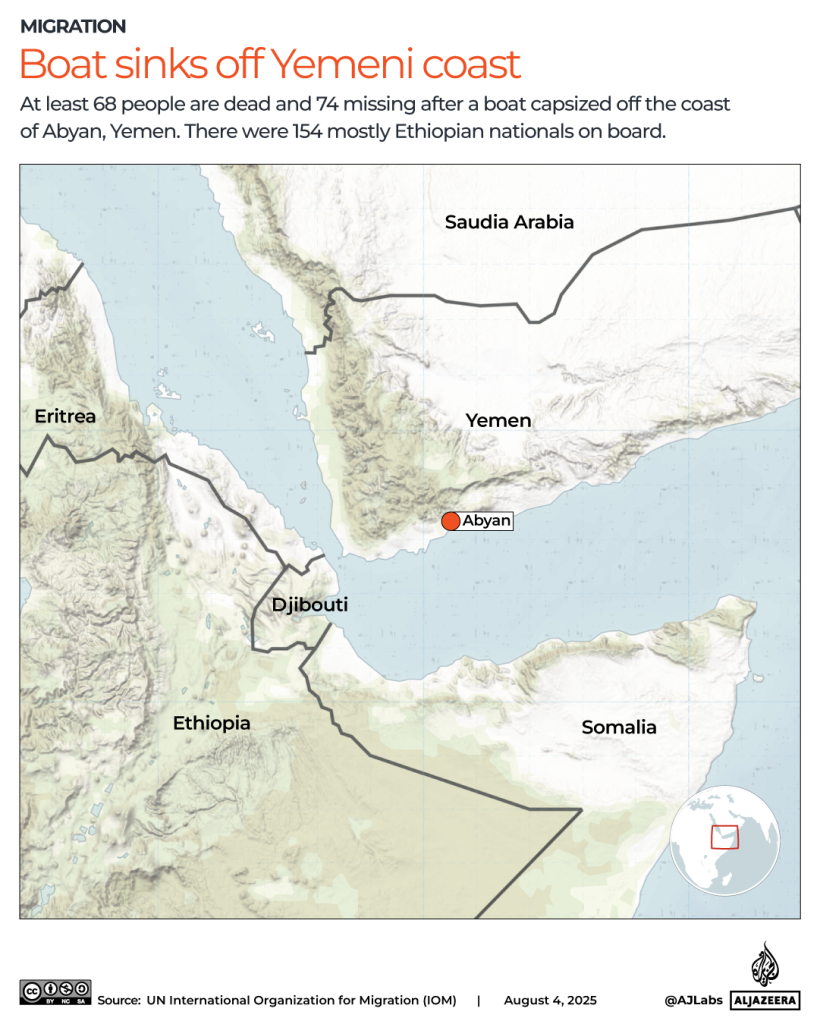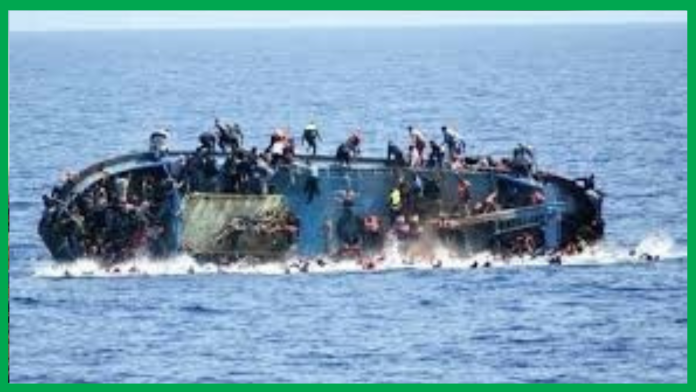Another boat. Another mass drowning. And the same unanswered questions.
At least 68 refugees and migrants—mostly Ethiopians—are confirmed dead after their overcrowded vessel capsized off Yemen’s Abyan province, the UN’s International Organization for Migration (IOM) reported. Another 74 people remain missing. Only 12 survived.
Their bodies, dozens of them, washed ashore in Khanfar district and elsewhere along the coast. Locals and aid workers carried them to makeshift morgues. Yemeni officials have begun the grim task of preparing mass burials near the coastal city of Shaqra.
But beneath the shock and sorrow lies a more troubling pattern—this isn’t the first time. In fact, it’s not even rare.
For over a decade, the route from the Horn of Africa to Yemen has been dubbed one of the world’s deadliest migration corridors. Desperate migrants from Ethiopia and Somalia continue to board rickety, overloaded boats across the Gulf of Aden or the Red Sea, often facilitated by criminal smuggling networks with little regard for human life.
Why, then, are the same stories repeating? Where is the systemic response to a known crisis?
According to the IOM, over 2,000 people have vanished on this route since 2014, including nearly 700 who drowned. Last year alone, 558 migrants died attempting the crossing. And still the boats depart.

Despite the 2022 truce between Houthi rebels and Yemen’s internationally recognized government—which brought a temporary reduction in violence—the conditions that drive people to flee haven’t improved significantly. Meanwhile, Yemen remains a transit hub for those hoping to reach Gulf countries, often lured by false promises or trafficked into forced labor.
The latest sinking raises painful but necessary questions:
- Why do smugglers continue to operate so openly across these waters?
- What role do underfunded coast guards, political indifference, or even corruption play in allowing such tragedies to persist?
- And why are international migration agencies seemingly limited to recovery and reporting, rather than prevention?
While patrols reportedly increased in 2024—leading to a drop in arrivals from over 97,000 to 60,000—the reality is that enforcement alone hasn’t stemmed the tide of desperation.
Yemen, itself ravaged by war and economic collapse, hosts around 380,000 migrants and refugees, many of whom remain trapped in limbo. For those who drowned this week, the journey ended in silence. For the rest, the road ahead is equally uncertain—and no less dangerous.
Until governments and global institutions confront not just the symptoms but the root systems of exploitation, poverty, and conflict, the question isn’t whether another boat will sink. It’s when.
source Aljazeera




https://shorturl.fm/hfumm